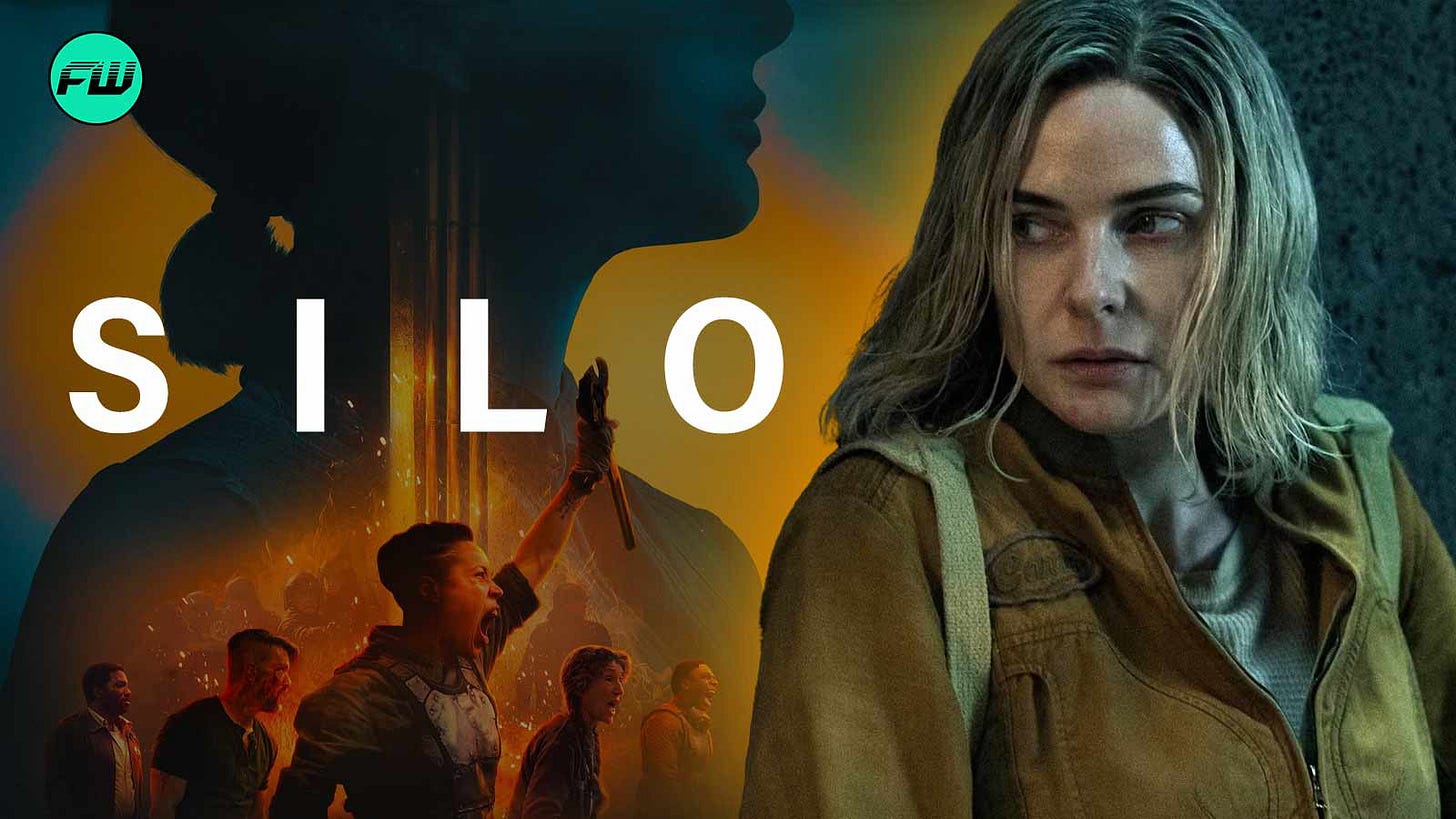“Silo” is a science fiction dystopian series based on Hugh Howey's popular post-apocalyptic novel series. The show premiered on Apple TV+ in May 2023, starring Rebecca Ferguson as Juliette Nichols, a mechanic who becomes involved in uncovering the mysteries of the massive underground silo where the last remnants of humanity live.
In this article, I will provide some commentary on the first season of the series. I haven’t read the books, so all of my commentary will be solely based on the series adaptation.
This is Part 1 of a series of posts, where I plan to explore various aspects of the world of Silo. Here’s my plan:
Part 1(this post): An overview of the Worldbuilding of Silo
Part 2: The Social and Political System of Silo
Part 3: Commentary on some of the key Characters in the story

The series is set in a future where the outside world is portrayed as toxic and uninhabitable (it is not known whether this is true or not. The truth is only revealed at the end of the season), and the entire human population survives within a giant underground silo with strict rules about society, reproduction, and interaction. The story follows Juliette as she investigates the circumstances of her partner's death and begins to question the fundamental rules and history of their enclosed society.
The world of the Silo is a massive underground ecosystem housing the last known survivors of humanity. Think of it as an underground skyscraper. A massive, multi-level metal structure that descends deep into the earth, containing around 10,000 thousand people in a strictly regulated society that has been isolated for generations.
From what the inhabitants know, the outside world is a toxic, uninhabitable wasteland. The surface is depicted as a desolate, poisonous environment that would kill any human within minutes of exposure. This understanding is reinforced by a massive viewing window at the top of the silo, showing a bleak, dead landscape - though the residents later discover this view might not be entirely truthful.
Social Structure
The silo is rigidly stratified, with a clear hierarchical system. The social hierarchy is meticulously structured around survival and control.
Leadership Tier: Comprises administrators like Bernard (IT), Sims (Judicial), and other high-ranking officials who control information and maintain order.
Specialized Workers: Each citizen is assigned a specific role crucial to the silo's survival - mechanics, farmers, IT specialists, sheriff's office, medical personnel.
Strict Population Control: Reproduction is carefully managed. Couples must apply for a childbearing permit, and population is tightly regulated to match the silo's limited resources.
Political System
The governance of the silo is fundamentally authoritarian, with survival serving as the primary justification for its strict control mechanisms. The political system is designed to prioritize collective preservation over individual liberty, creating a tightly controlled environment where information is meticulously managed and historical narratives are carefully curated to maintain social order. Movement within the silo is severely restricted, with clear boundaries between different levels and social strata. The leadership implements harsh punishments for any form of dissent, using the threat of potential extinction as a constant backdrop to their governance. This belief system fundamentally argues that personal freedoms must be sacrificed to ensure the survival of the human population trapped within the massive underground structure. The core philosophy driving this political system is a deeply ingrained belief that individual choices pose an existential threat to the community's survival. Every aspect of social interaction, personal choice, and information access is carefully regulated to maintain the delicate balance of their enclosed world, transforming governance into a mechanism of absolute control justified by the constant, looming threat of potential annihilation.
THE REBELLION
From the details revealed in the first season of Silo, the rebellion is shown to be a pivotal historical event that dramatically reshaped the silo's social and political structure. The rebellion occurred before the current timeline and resulted in a violent overthrow of the previous leadership or social order.
The rebellion occurred approximately 140 years before the current timeline. This is understood from the context that the current generation is several generations removed from the original founders, but not so distant that all memory or traces of the event have been completely lost. The rebellion is presented as a relatively recent historical event in the collective memory of the silo's inhabitants, significant enough to have shaped their entire current social structure, but distant enough that its precise details have become somewhat mythologized.
During or after the rebellion, significant historical artifacts were deliberately destroyed. This was likely a strategic move to eliminate evidence, erase previous historical narratives, and prevent future challenges to the new power structure. Following the rebellion, extremely strict controls were implemented on information sharing, historical knowledge, and communication between different groups within the silo. Possession of most “relics” from before the rebellion is considered illegal.
The event created a deep-seated fear of dissent among silo inhabitants. The current social system is fundamentally built on the trauma and lessons learned from this rebellion. The current leadership uses the rebellion as a justification for their extreme control mechanisms, presenting it as a necessary reset to ensure survival.
The full details of the rebellion remain intentionally mysterious in the first season, with only fragments of information being revealed, which maintains narrative tension and allows for gradual exploration of the silo's complex history.



